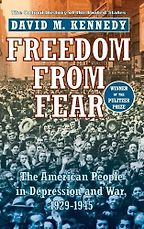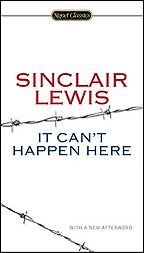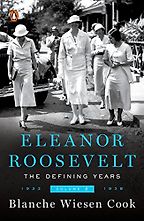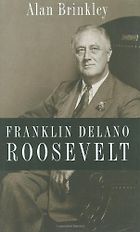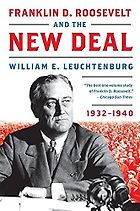Before becoming historian-in-residence at Harvard’s Franklin Delano Roosevelt Foundation, you were the director of FDR’s Presidential Library, which is housed on his palatial neoclassical New York estate. I want to begin by asking you about the roots and early years of America’s 32nd President.
Franklin Delano Roosevelt was born in the Hudson Valley on January 30, 1882, on his family estate at Hyde Park. His mother Sarah Delano Roosevelt was 26 years younger than her husband James Roosevelt, Franklin’s father. Franklin would be their only child. His upbringing, as Geoffrey Ward—one of his biographers—said, was “cossetted.” Roosevelt’s father’s ancestors were among New York’s old Dutch families. They came to Manhattan in about 1650. His mother was descended from old New England whaling and China trade families and traced her ancestry back to the Mayflower. So the Roosevelts were part of America’s aristocracy. Franklin grew up in this very privileged world and was well aware of it.
The Roosevelts summered in Hyde Park; theirs was one of a string of estates along the Hudson River. FDR lived in the family estate at Hyde Park his entire life, and by the end of his life, it was about 1,300 acres. The Roosevelts also had a residence in New York City and a summer place on Campobello Island off the coast of Maine, in New Brunswick, Canada. The Roosevelts were also very cosmopolitan. They traveled to Europe very frequently, especially when his father was ill and they sought treatments at spas in Germany. I once calculated that by the age of 15 Franklin had spent more than half his life in Europe. So Franklin’s upbringing was very international.
As a child, Franklin had friends on neighboring estates but spent a lot of time alone. He was privately tutored at home until age 14, when his parents enrolled him at the Groton School. There he had his first formative educational experience under the leadership of Endicott Peabody, whose ethos was to form public-spirited young gentlemen to make contributions to the world.
“He changed from being a rather arrogant young man into someone who had deep empathy for people who were suffering”
FDR went on to Harvard and graduated in 1904. Although he completed his coursework in 1903, he stayed on to lead the student newspaper (the Harvard Crimson) as its editor. He lived throughout his four years in a residence building on what was then called the ‘Gold Coast’ of Harvard (today’s Adams House), where the wealthiest young men stayed. There were porters and maids, who also made tea. It was a very elite existence.
FDR met his distant cousin Eleanor during his Harvard years. She was the niece of President Theodore Roosevelt. Eleanor had just returned from England where she had been sent at age 15 to the Allenswood boarding school outside London, where she first developed her progressive political viewpoints under the tutorship of the feminist headmistress Marie Souvestre, a progressive educator. Eleanor never completed her education beyond age 17. After her “coming out” as a debutante, Eleanor began working at a settlement house on the Lower East Side of New York. During this period she was courted by Franklin. They married in 1905 and almost immediately began their family.
Franklin attended Columbia University Law School, passed his bar exams, and worked briefly for one of the law firms in New York. But he soon became involved in politics and was elected to the New York State Senate in 1911. After working hard for Woodrow Wilson’s election, Roosevelt went to Washington in 1913 as Assistant Secretary of the Navy, intentionally following the path of Theodore Roosevelt.
The Roosevelts became part of the Washington political and social scene. Mrs. Roosevelt had three children by this time (she had five babies by 1916). To take care of her heavy social responsibilities as the wife of a high-ranking official, she hired a secretary. During these years Franklin learned about the workings of official Washington and its bureaucracy and, as war drew closer, he was instrumental in preparing the Navy for World War I. But this is also the period when Franklin and Lucy Mercer—Eleanor’s social secretary—fell in love and he began being unfaithful.
FDR’s lucky life was marred when he was afflicted with polio. When did that happen?
That happened in 1921, a year after he ran for vice president. He was 39 years old at the time.
Scholars’ surveys and public opinion polls consistently place FDR among the top three to five most admired presidents. How did the most aristocratic of Americans earn his place in the pantheon of America’s populist champions?
He had empathy. Many people, including Mrs. Roosevelt, attribute his possession of that quality to the trials that he went through during his battle against polio. He changed from being a rather arrogant young man into someone who had deep empathy for people who were suffering.
Then there was Eleanor’s influence. Mrs. Roosevelt had been active on women’s issues beginning in the 1920s, and on social and labor issues as early as in the teens. The two of them were cut from a different cloth than was typical of aristocrats.
Turning to the books you’ve selected. The first recommendation I want to talk about is National Book Award-winning New Deal historian Alan Brinkley’s compact biography, Franklin Delano Roosevelt. Tell me about this one, please.
Franklin Roosevelt is not as well known today as he should be among students. And everybody appreciates a book that is less than a hundred pages long. There are many, many, wonderful biographies of Roosevelt, beginning with the ones done by Arthur Schlesinger, Jr. and James McGregor Burns. Then Jean Edward Smith and Roger Daniels. The genius of what Alan did is to make Roosevelt’s story accessible by getting it down to a hundred pages.
I love it. I’m glad that you said that sometimes faculty look to your organization for advice on books for syllabi, because this title is particularly fit for teaching.
“No president since the founders has done more to shape the character of American government,” Brinkley wrote. “And no president since Lincoln has served through darker or more difficult times.” Upon entering office, FDR inherited from Herbert Hoover—his predecessor as President—the Great Depression caused by the Crash of 1929. FDR instituted a set of policies known collectively as The New Deal. Your next recommendation was written by America’s emeritus New Deal expert William E. Leuchtenberg. Please tell us about Franklin D. Roosevelt and the New Deal.
William Leuchtenburg is the preeminent historian of the New Deal. He first published this book in 1963 and it remains the standard treatment. It’s the wellspring for almost everything we understand about the New Deal. It lays out, in a concise volume, the story of the New Deal.
Leuchtenberg brings to life the suffering of the people in the early years of the Great Depression. There are stories of the people living along railroad tracks and families going through the garbage to find food.
The picture he’s able to draw gives a sense of why Roosevelt’s promise of change catapulted him to the presidency. Things were so dire that the electorate was desperate for change. They weren’t quite sure what the New Deal was. Roosevelt made statements about fundamental reforms of the system that were put together by his advisory group, which the press called the Brain Trust. The public found the difference between the misery of the early Great Depression and the energy of Roosevelt and the New Dealers refreshing. Then the book goes on to describe the unfolding of the emergency measures of the First Hundred Days and of the Second New Deal, which brought us Social Security and many other important reforms.
Freedom from Fear is a fantastic contribution to the Oxford History of the United States series by Stanford historian David Kennedy. This book won both the Pulitzer Prize and the Francis Parkman Prize and expanded our understanding of how Roosevelt refreshed a country that was desperate for change.
In Freedom from Fear, Kennedy condenses—into one very large volume—the story of how Roosevelt brought the country out of the Great Depression and into World War II. He begins in the Hoover years and explores some of the structural problems with the economy. He takes you right through the New Deal years, including the failure of New Deal programs during the late 1930s when political opposition mounted. And he carries you all the way through World War II and the early years of the Cold War that immediately followed.
Five Books interviews are expensive to produce. If you're enjoying this interview, please support us by donating a small amount.
As its title says, Freedom from Fear is really a history of the American people during these decades—the 1930s and 1940s. When I want to look for what was happening at any moment of Roosevelt’s presidency, I turn to Freedom from Fear. It has a great index. Once you’ve read it through, it’s a wonderful work to have on your shelf and return to in pieces.
Next you recommend a 1935 dystopian novel by Nobel Prize winner Sinclair Lewis. Tell us about It Can’t Happen Here and its relevance to Roosevelt.
It Can’t Happen Here gives us a window into an aspect of the 1930s that is often forgotten. Roosevelt was elected during a period when authoritarianism was on the rise around the world, with the elevation of Adolf Hitler and the consolidation of Mussolini’s powers. Popular sentiment was not uniformly behind the New Deal and Franklin Roosevelt. In fact, by 1935 FDR was facing serious challenges, both from the right and from the left. It was a time when many Americans—including leading pundits like Walter Lippmann—worried that democracy was failing and demagogues could easily gain a grip on power.
That’s why the Sinclair Lewis book It Can’t Happen Here is so useful. Based loosely on Adolf Hitler’s rise, it shows in a frightening way how a democratic republic like America can fall prey to authoritarianism. It tells the story through the eyes of a small-town New England journalist who watches as demagogues seize control of different organs of society and as citizens swallow disinformation about what is happening when they are fed unrealistic promises—that never materialize—of a better future. It’s a novel that is worth revisiting to remember the atmosphere in America when Roosevelt was elected. And it remains relevant today, as we can see in Russia and with Donald Trump’s continued control of the Republican Party.
Your final book is about one of America’s most memorable first ladies. Please tell me about historian Blanche Wiesen Cook’s Eleanor Roosevelt: The Defining Years, 1933–1938.
Cook has dedicated much of her scholarly life to a three-volume biography of Eleanor Roosevelt. Since I’ve been involved with what I call the world of the Roosevelts, I turned to this book for the granular view of what was going on with Mrs. Roosevelt.
Blanche helps readers see the ways in which Eleanor advanced progressive causes, publicly and privately. Eleanor made contributions, both from the sidelines and out front—visiting coal mines, impoverished communities, and New Deal projects. She traveled all over the country speaking on issues of importance not only to FDR’s presidency, but on issues she wished to advance. She became increasingly involved with civil rights as the 1930s wore on.
It’s a story of Eleanor’s awakening and how she brought Franklin along. Franklin’s presidency would not have been what it was, by any measure, if it weren’t for the contributions that Eleanor was making.
Did Eleanor’s public profile and robust role in the administration represent a break from the part played by previous first ladies?
Eleanor was pretty much a 180-degree reversal of the traditional role. She didn’t want to be a White House hostess. She had seen the role of the first lady up close during Woodrow Wilson’s administration and during her uncle Theodore Roosevelt’s presidency. Eleanor also did not want to return to Washington because she had developed a very independent life during the 1920s. She was teaching, working on women’s labor issues and with Val-Kill Industries (a workers cooperative she founded with two friends on the Roosevelt estate), and was active in politics as the chair of the Women’s Committee of the Democratic Party. Blanche Wiesen Cook has called her the most important woman in national politics in the late 1920s.
Mrs. Roosevelt changed the role of First Lady. In partnership with the reporter Lorena Hickok—who was, perhaps, her lover—she began women-only press conferences where, mixed in with “women’s issues,” she often addressed national policy. She continued to write a column, which was a homely mixture of what her family was up to and what she was interested in in terms of national issues. She shared insights into the private life of the Roosevelt family, making them familiar figures to Americans and the president and his policies more accessible. She was public facing in a way that I don’t think any other First Lady has ever been.
Historian Alan Brinkley, whom we discussed earlier, notes that the crises FDR faced as president “brought out his greatness, and his guile.” Having informed us about FDR’s greatness, please tell us about his guile.
His guile contributed to his greatness. FDR called himself the juggler because he had to keep so many things going at the same time. For instance, he wanted to stop lynching but knew that he couldn’t get an anti-lynching bill through Congress without antagonizing the southern wing of the Democratic Party—which would have ended the New Deal. He was willing to try guile and charm rather than turning to confrontation. FDR is criticized for trusting Stalin too much. I don’t think he trusted Stalin, but he was optimistic enough to believe he could use his charm to find common ground in the search for a peaceful world. He didn’t let people know what he was thinking. He was manipulative in a way that moved his policies forward. Guile—used in service to the New Deal, winning World War II, and planning for peace—was key to his success in many ways.
More American history book recommendations
Interview by Eve Gerber
October 8, 2022. Updated: March 4, 2025
Five Books aims to keep its book recommendations and interviews up to date. If you are the interviewee and would like to update your choice of books (or even just what you say about them) please email us at [email protected]


